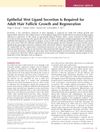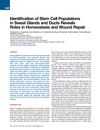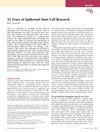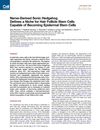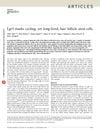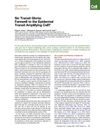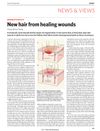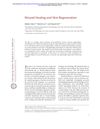Epithelial Stem Cells And Implications For Wound Repair
October 2012
in “
Seminars in Cell & Developmental Biology
”
epithelial stem cells hair follicles cutaneous wound healing epidermal stem cells hair follicle stem cells Lrig1+ stem cells Gli1+ stem cells Lgr6+ stem cells isthmus sebaceous gland neogenic hair follicles Krt15+ bulge stem cells non-hair follicle stem cells canonical WNT signaling Lhx2 Lim-homeodomain transcription factor re-epithelialization skin stem cells wound healing skin healing hair stem cells WNT signaling Lhx2 transcription factor
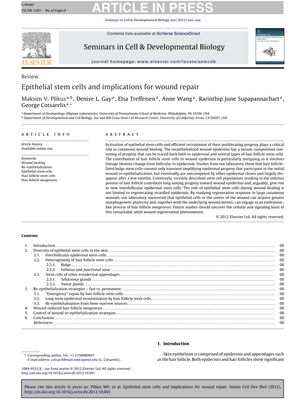
TLDR Different types of stem cells in hair follicles play unique roles in wound healing and hair growth, with some stem cells not originating from existing hair follicles but from non-hair follicle cells. WNT signaling and the Lhx2 factor are key in creating new hair follicles.
The 2012 study "Epithelial stem cells and implications for wound repair" explored the role of epithelial stem cells, especially those from hair follicles, in wound healing. The researchers discovered that the activation of these stem cells and their proliferating offspring were crucial in cutaneous wound healing. They found that the healed wound epidermis was a mosaic composition of progeny traced back to both epidermal and several types of hair follicle stem cells. The study also identified several distinct stem cell populations in the hair follicles, including Lrig1+, Gli1+, and Lgr6+ stem cells, which contribute to the maintenance of the isthmus and sebaceous gland. The researchers concluded that different stem cell populations in the hair follicle contribute to wound healing and hair follicle regeneration in distinct ways. They also found that neogenic hair follicles and their stem cells do not originate from Krt15+ bulge stem cells of pre-existing hair follicles at the wound edge, but from non-hair follicle stem cells that likely acquire embryonic-like competence and transiently expand their lineage plasticity. The study highlighted the key role of canonical WNT signaling in inducing neogenic hair follicles and suggested that Lhx2, a Lim-homeodomain transcription factor, plays a crucial role in directing follicular stem cells toward re-epithelialization.
